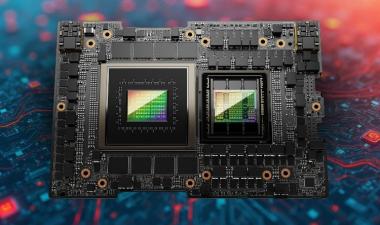2026 Automotive Outlook Report
Our Semiconductor Outlook Report series provides a comprehensive look into key trends in end markets and technologies. Unlock detailed analyses, forecasts, and expert perspectives on how the semiconductor market will evolve through 2026.
To view any 2026 Outlook Report, you must be a registered TechInsights Platform user — sign in or create a free account to access the full report, or fill out the form above to get started.
What’s Driving Automotive in 2026
Driving Innovation
Automotive innovation in 2026 goes beyond node scaling. Sensors, PMICs, wide-bandgap power, high-performance SoCs, and emerging memory technologies are converging to enable more capable, software-defined vehicles.
Managing Cost & Risk
Tariffs, inventory swings, and shifting lead times make cost control critical in 2026. Buyers must navigate volatility while capitalizing on emerging windows for strategic procurement and supply-chain resilience.
Targeting High-Growth Markets
Growth will concentrate in specific regions, vehicle segments, and semiconductor categories. TechInsights highlights where the strongest opportunities lie through 2029—and what capabilities vendors need to capture them.
The Five Expectations for Automotive in 2026
1. Tariff Impacts Mean High Uncertainties
Ongoing U.S. tariff negotiations continue to widen the potential range for 2026 automotive semiconductor demand, keeping market conditions uncertain. With lead times fluctuating due to pre-tariff stockpiling, buyers should stay closely aligned to TechInsights’ ongoing capacity and lead-time analysis.
2. China Is Driving Demand—but Addressing It Is Challenging
China remains the largest and fastest-growing automotive semiconductor market, but vertical integration and strong domestic chip policies limit the opportunity for global suppliers. With some automakers targeting models using fully local chips by 2026, competitive pressure on foreign vendors will intensify.
3. Vehicle Architecture Change Is Rewiring the Supply Chain
The industry is rapidly shifting from distributed ECUs to centralized compute, making 2026 a pivotal transition year. Suppliers unable to support software-defined features and high-value consolidated controllers risk losing relevance as OEMs overhaul vehicle architectures.
4. Are 48V and 800V Emerging as the New Standards?
Rising electrification is accelerating adoption of 48V systems and fueling a surge in 800V platform launches, particularly in China. However, 400V architectures will continue to dominate lower-tier vehicles through the rest of the decade.
5. AI’s Impact on Automotive Goes Beyond Automated Driving
AI adoption is now advancing fastest inside the vehicle cabin, driven by China’s rapid rollout of generative AI features. This shift is propelling high-performance SoCs and memory into the industry’s fastest-growing semiconductor categories through 2029.
Sign in or create your free account now to access the full 2026 Automotive Outlook Report from TechInsights.
Missed the Outlook Summit Series Webinar? Watch the replay: “5 Expectations for the Automotive Market in 2026.”










